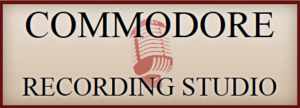One of the trickier formats we encounter is lacquer one-off discs, sometimes (incorrectly) referred to as “acetates.” These may include home recordings, studio safeties, radio station airchecks, recording booth novelty discs, voice letters from military personnel, and more.
Though they look similar to ordinary disc records, there are some important differences that require them to be handled quite differently! First, unlike commercially released disc records where multiple copies are pressed on shellac or vinyl, lacquers are recorded one at a time on blanks made from metal, fiber or glass, and coated with a thick layer of lacquer. The lacquer coating is much more fragile than a normal record surface, and if stored in a less-than-ideal environment (e.g. a damp basement), is prone to develop cracks and possibly even separate and “flake off” from the base disc. Lacquers must be handled with care by someone familiar with their idiosyncrasies.
Another issue unique to these records is exudation, a white or gray film which is often mistaken for mold or mildew on the playing surface. What it actually is is a waxy by-product of the lacquer that “sweats” out onto the playing surface, and can usually be cleaned off successfully. But again, this must be done with care by someone who knows what they’re doing! Lacquer is very easily damaged, and discs can become unplayable if improper cleaning is attempted.
At Commodore we have successfully transferred and digitized hundreds of these discs, and no collection is too big or too small! If you have one-offs in need of digitizing, give us a call!

